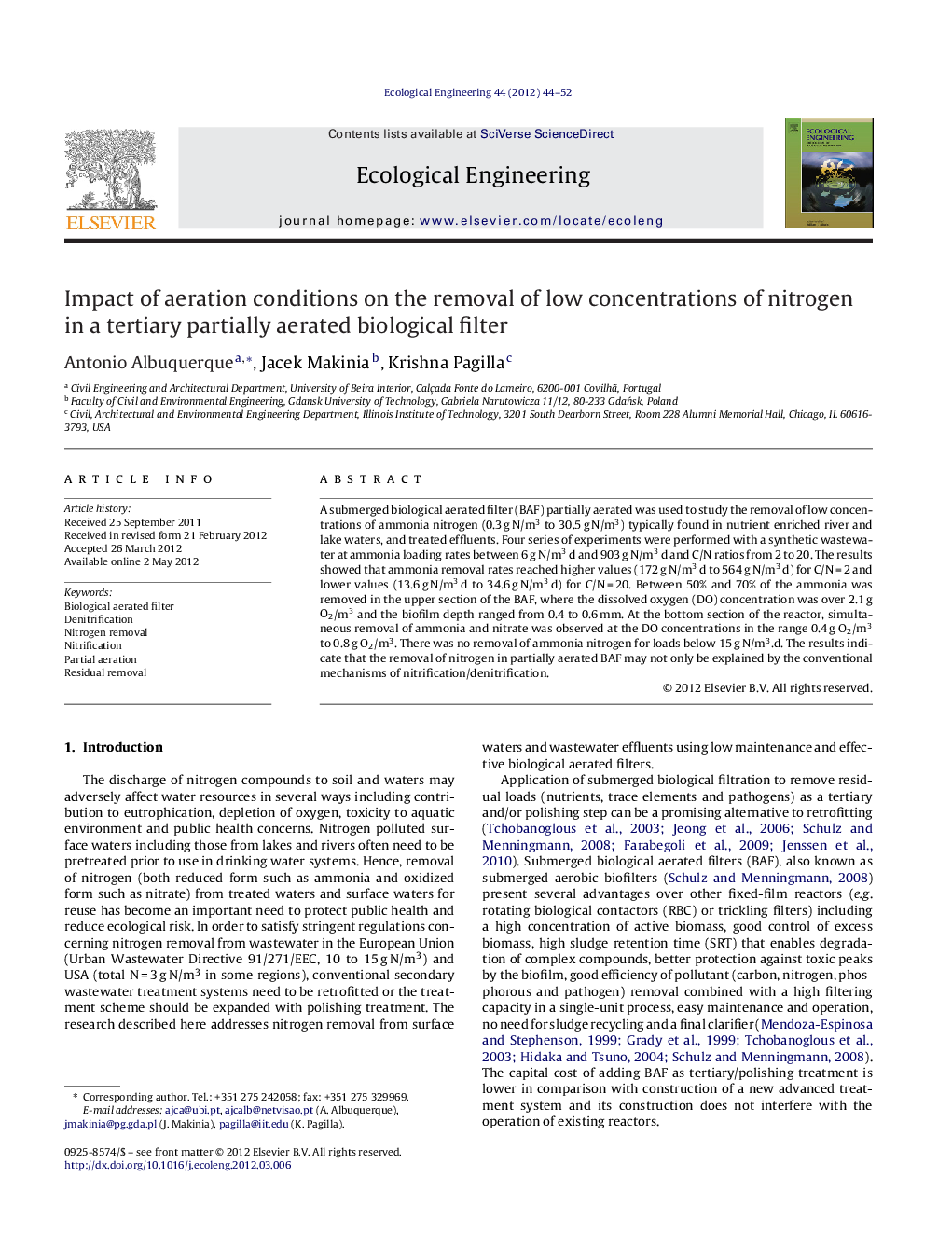| Article ID | Journal | Published Year | Pages | File Type |
|---|---|---|---|---|
| 6302656 | Ecological Engineering | 2012 | 9 Pages |
A submerged biological aerated filter (BAF) partially aerated was used to study the removal of low concentrations of ammonia nitrogen (0.3 g N/m3 to 30.5 g N/m3) typically found in nutrient enriched river and lake waters, and treated effluents. Four series of experiments were performed with a synthetic wastewater at ammonia loading rates between 6 g N/m3 d and 903 g N/m3 d and C/N ratios from 2 to 20. The results showed that ammonia removal rates reached higher values (172 g N/m3 d to 564 g N/m3 d) for C/N = 2 and lower values (13.6 g N/m3 d to 34.6 g N/m3 d) for C/N = 20. Between 50% and 70% of the ammonia was removed in the upper section of the BAF, where the dissolved oxygen (DO) concentration was over 2.1 g O2/m3 and the biofilm depth ranged from 0.4 to 0.6 mm. At the bottom section of the reactor, simultaneous removal of ammonia and nitrate was observed at the DO concentrations in the range 0.4 g O2/m3 to 0.8 g O2/m3. There was no removal of ammonia nitrogen for loads below 15 g N/m3.d. The results indicate that the removal of nitrogen in partially aerated BAF may not only be explained by the conventional mechanisms of nitrification/denitrification.
⺠A partially aerated biological filter was used for tertiary removal of low nitrogen concentrations. ⺠Aerobic conditions at the top media allowed good removal of ammonia residuals. ⺠Anoxic conditions at the middle allowed simultaneous removal of ammonia and nitrate residuals. ⺠Nitrogen residuals removal cannot only be explained by nitrification/denitrification pathways.
